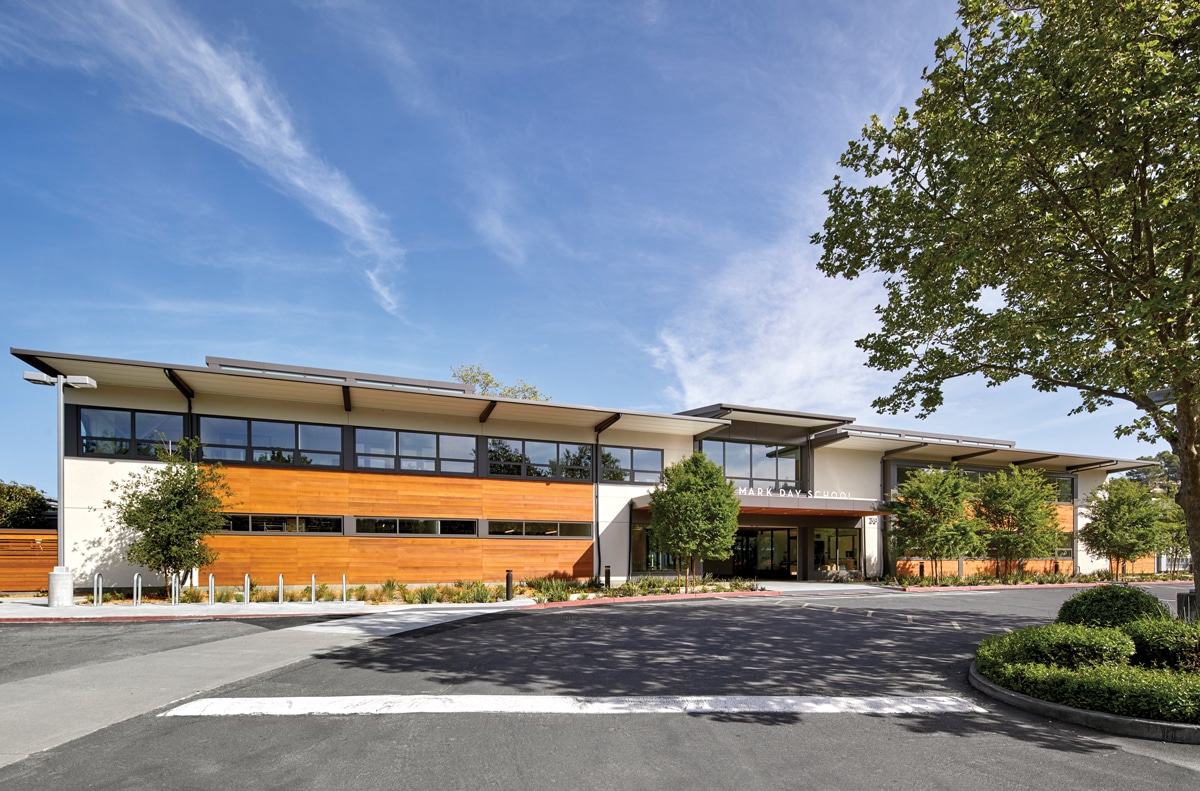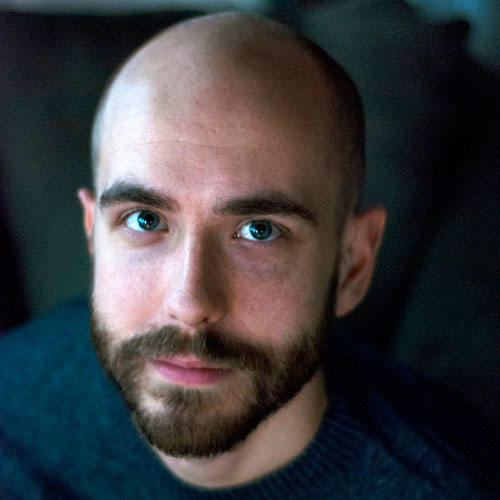Story at a glance:
- Architecture firm EHDD is known for designing LEED Platinum schools.
- Beyond having the latest technology, the design team wanted to build in a way that protected the natural landscape.
- Large windows and sliding glass doors allow sunlight to pour in and connect to the heart of the school—its courtyard.

EHDD designed the new flagship building for Mark Day School in San Rafael, California. Photo courtesy of EHDD
Creating a zero energy building wasn’t the big challenge when Scott Shell, principal at EHDD, and his team set out to design a new flagship building for Mark Day School in San Rafael, California.
“We’ve done four or five LEED Platinum schools, and the formula for us has always been to essentially do a zero energy building,” he says. “Ten years ago that was hard. Now it’s gotten—I don’t know if I’ll say routine—but the formula is clear and the economics are there.”
The real challenge for this K-8 project was more abstract: For a community that prides itself on being “full of heart,” how could Shell and his team add a physical, emotional heart to the existing campus?
“They really wanted something that reflected who they are and that showed off on the outside who they are on the inside,” Shell says. The drab, sprawling 1960s campus didn’t do that.
Building New and Making the Most of the Old
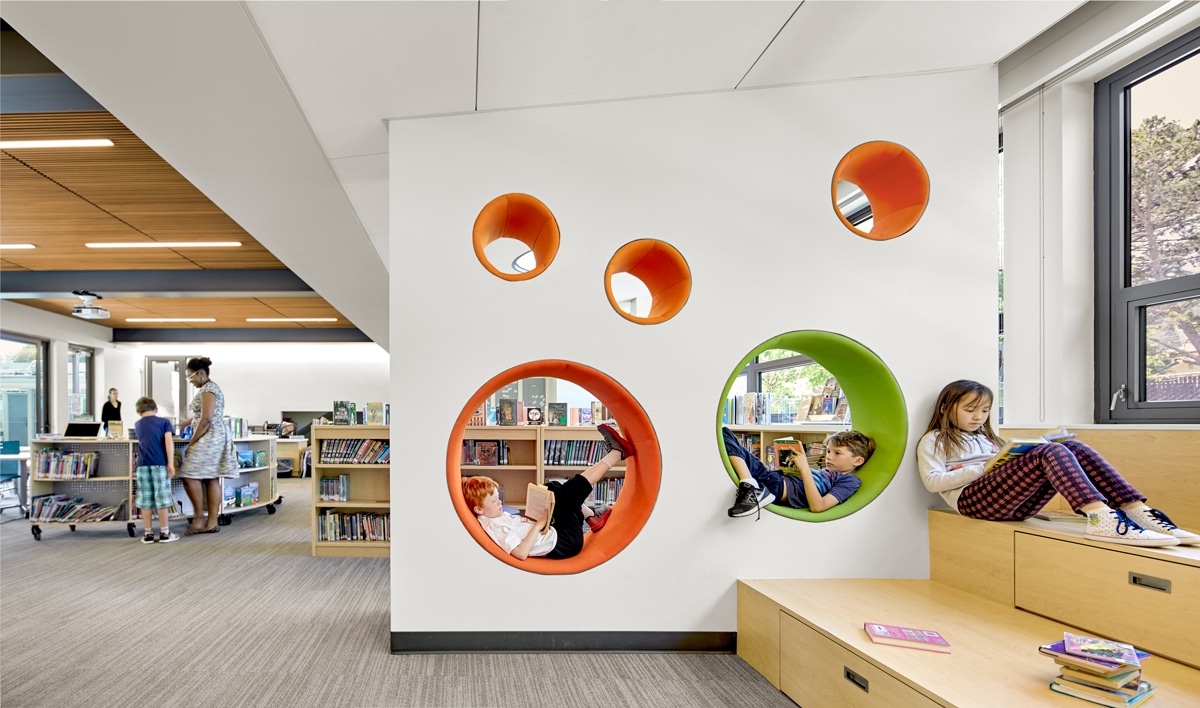
Inside the library at the Mark Day School in California. Photo courtesy of EHDD
Shell and his design team were tasked with adding a maker lab and library and remodeling the administration building and school grounds.
“The first thing was we made a two-story building so you could see it from the street,” he says.
Having added an eye-catching new feature, the team then focused on what already existed. The original campus was low and underwhelming, but it did have one cool piece—an outdoor courtyard, or quad.
“It was kind of an under-used quad. And we, with them participating in the process, reframed that as the heart of the school,” Shell says.
Without disturbing the two mature trees already growing there, they redesigned the existing outdoor amphitheater, building it up instead of leaving it dug into the ground. Then they replaced the straight, forward-facing benches with curved seating to foster a strong sense of community during weekly all-school meetings.
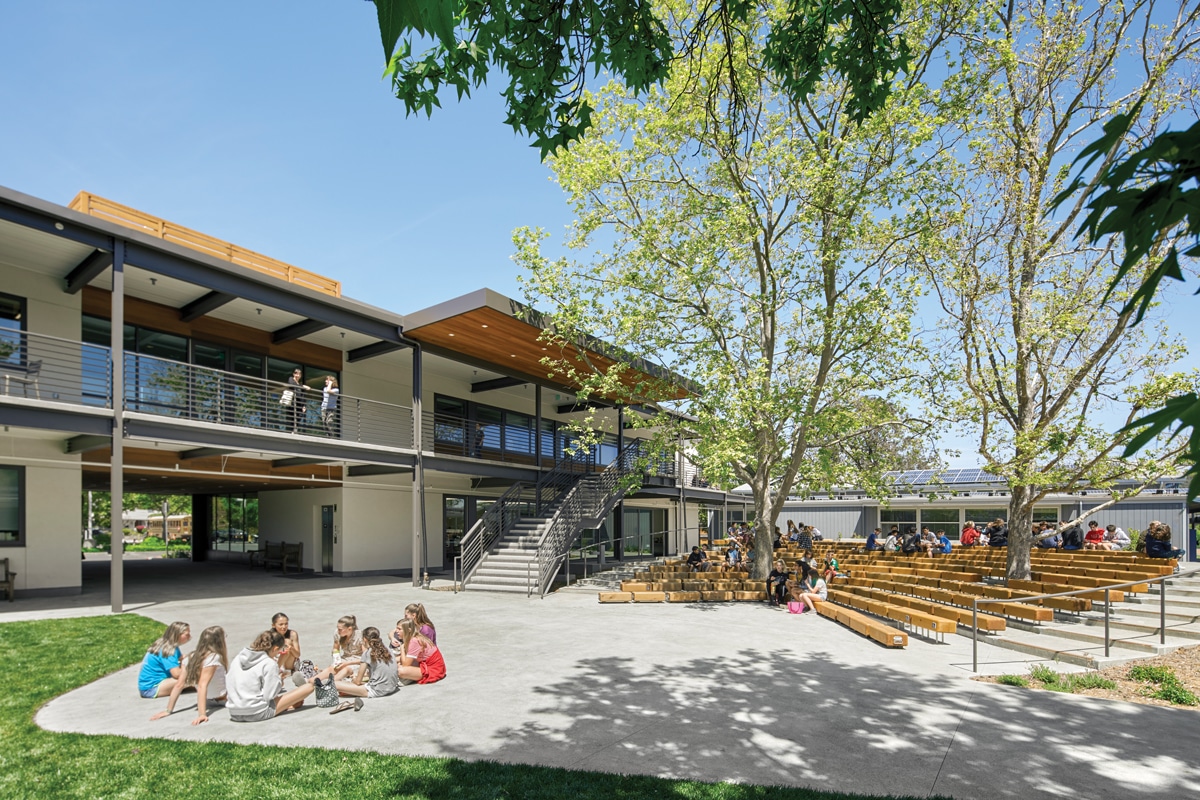
The new amphitheater at the Mark Day School in California. Photo courtesy of EHDD
“It’s about the students seeing each other and interacting with each other,” Shell says. “It’s about the whole community and not just the head of school or the faculty up in the front teaching.”
For all the sustainable and thoughtfully designed features in the new building, it’s the way the building interacts with the revamped quad that makes it truly special. The libraries and maker space all feature huge windows and sliding glass doors.
It all opens out to a balcony and sidewalk that then opens onto this quad, the heart of the school.
It’s an easy, flexible progression from indoors to outdoors, and it’s a progression that keeps the school’s focus on the shared space—and community—at its core.
Since completing construction, Shell has returned to Mark Day School for an all-school meeting in the new amphitheater.
“They’re loving it,” he says. “The head of school says something; somebody from the soccer team gets up and talks about their games; somebody from the music department talks about the concert they had and shows some pictures; a student can get up and tell a joke—it’s amazing to watch.”
Sustainable Details
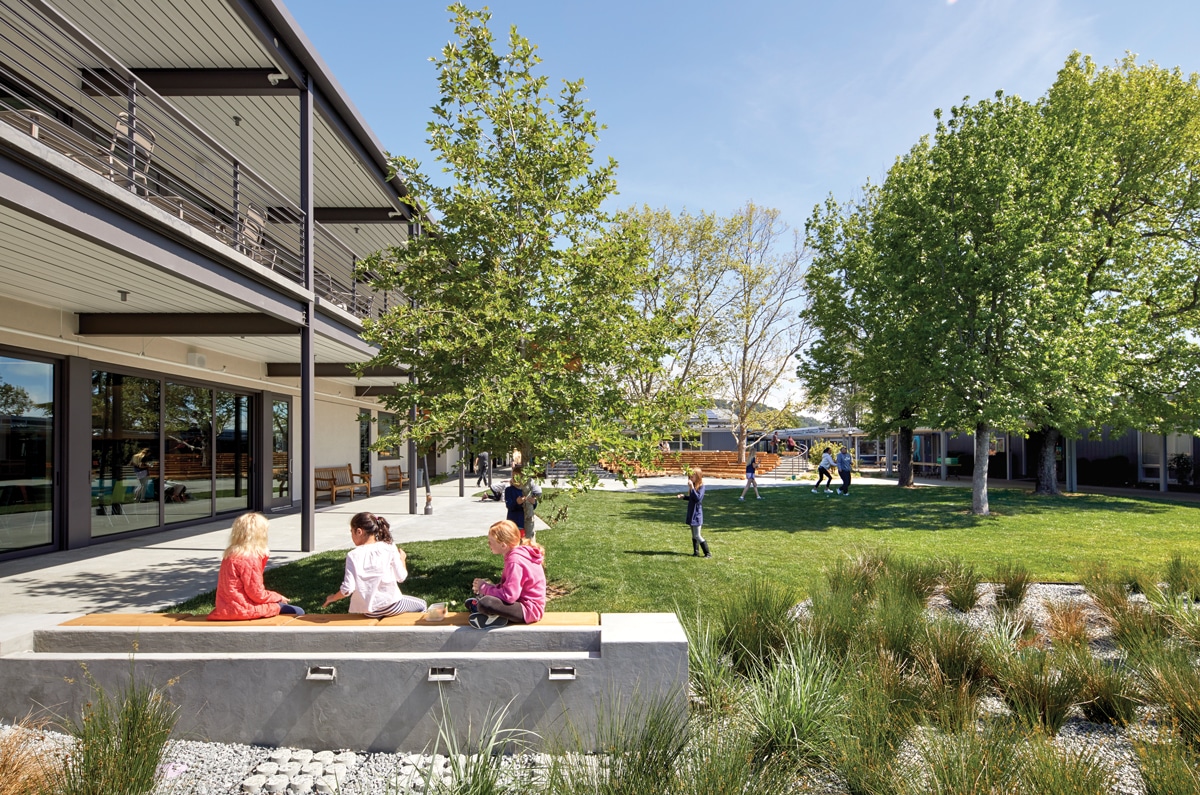
Photo courtesy of EHDD
Building on their experience with zero energy schools, EHDD used familiar tactics: a highly efficient heat pump, all-electric power, daylighting, sun shading, and top-tier insulation.
They even found ways to use the existing infrastructure to reach their energy goals. The roof of the gym just happened to face southwest with a perfect angle and uninterrupted view. It now sports a huge solar array that produces nearly twice the electricity the new building uses.
“Too often all of our building systems are hidden and people don’t know how a system works,” Shell says.
So EHDD made sure to prioritize visibility for teachers and students to learn from.
Rooftop water is prominently collected and funneled through visible infrastructure into beautiful rain gardens in the courtyard, and the building’s structural components are left out in the open for all to see.
Making Maker Spaces
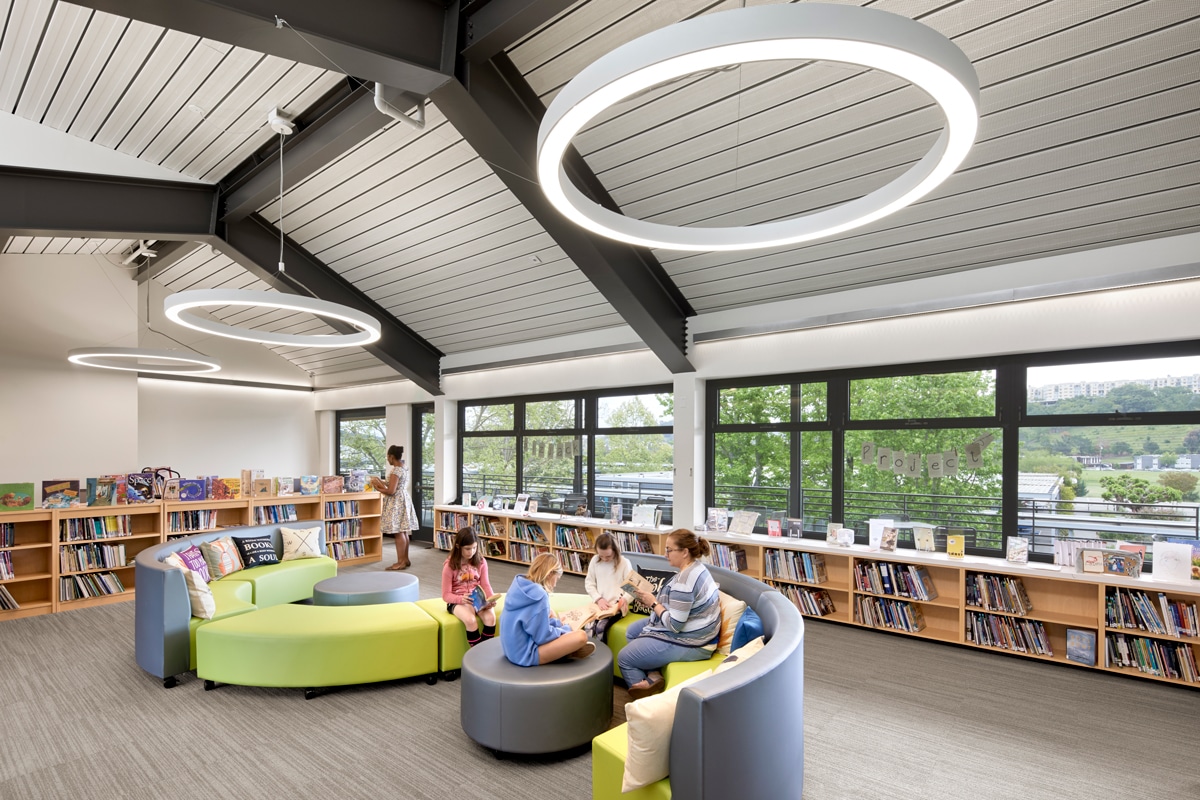
Photo courtesy of EHDD
Shell feels a sense of pride in building maker spaces that prepare students for a life of creating.
“I’ve always been a maker—I’ve always loved building things,” he says.
But he himself got his start in design and construction years later than students at Mark Day School will.
“This amazing set of digital tools they can use to design and then fabricate—it’s just incredible. Just imagine if you’re able to do that in third grade, what a head start you have by the time you’re in college or your career.”
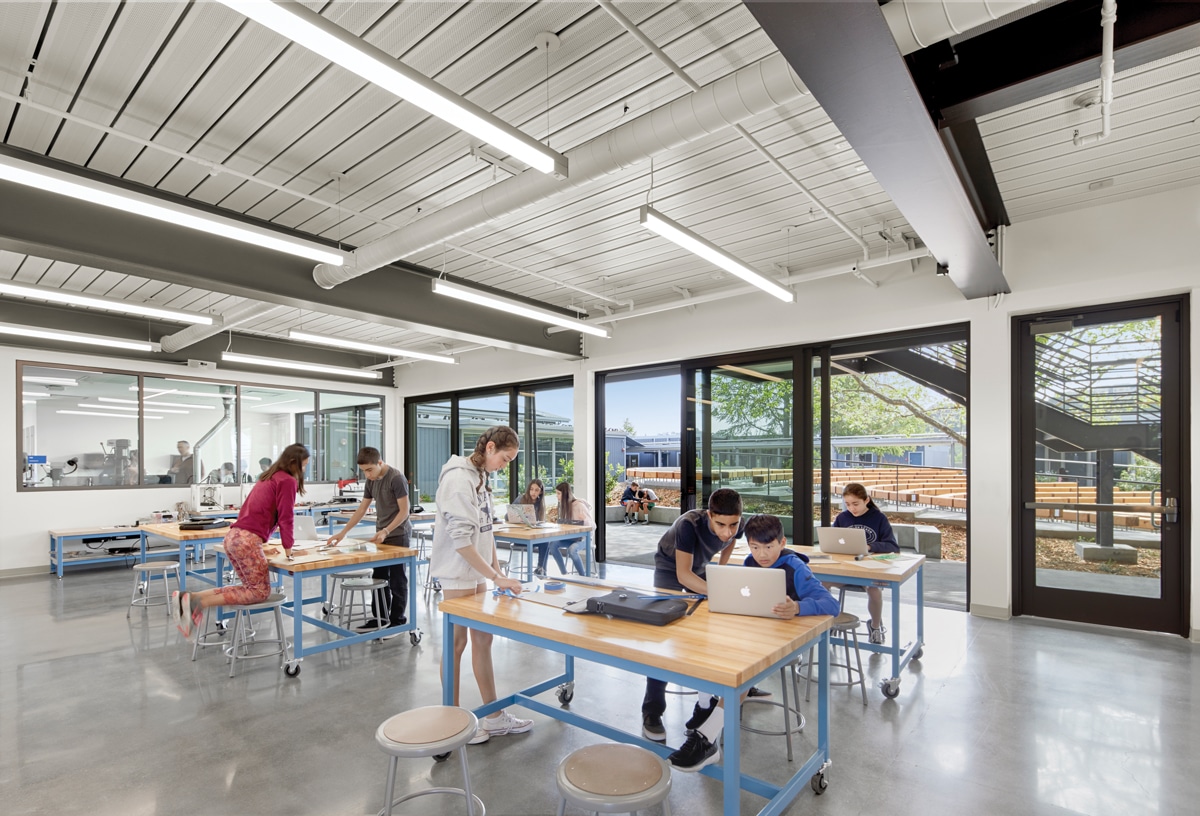
Photo courtesy of EHDD
The space inside the maker lab and libraries is designed to give teachers and students as many options as possible.
Tables move, walls slide, and the entire building is clear span, giving the school the option to redesign the internal layout some day in the future.
The library includes tons of options beyond regular tables and chairs: soft seating, hangout spots, reading nooks.
“The main thing is to give the students a choice and options so they can find the place they want,” Shell says.

Drawing courtesy of EHDD
Project: Mark Day School Location: San Rafael, CA Size: 12,000 square feet Architect: EHDD Structural Engineer: Pivot Structural Engineering Mechanical, Electrical, and Plumbing: Integral Group Civil Engineer: AECOM Contractor: Wright Contracting Landscape Architect: CMG Landscape Architecture Acoustics: Charles M. Salter Associates, Inc. Fire Protection: Jensen Hughes

